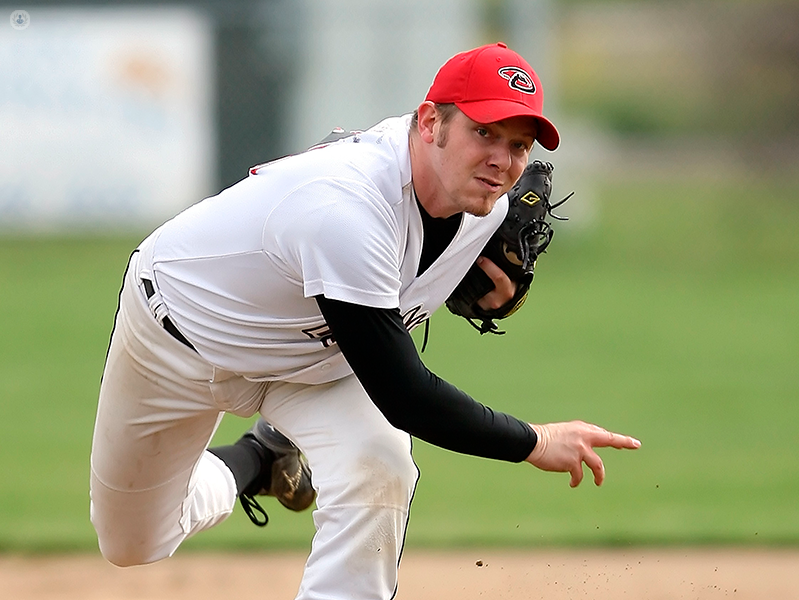SLAP tear
Mr Adrian Simons - Orthopaedic surgery
Created on: 02-07-2014
Updated on: 06-26-2023
Edited by: Jay Staniland
What is a SLAP tear?
A SLAP tear is a type of shoulder injury. Your shoulder is surrounded by a band of tissue called the labrum to keep the joint stable. The labrum in your shoulder can tear in many ways. A SLAP tear involves the labrum being torn where it connects to your biceps tendon, both at the front or back.

What are the symptoms?
Symptoms of a SLAP tear include:
- a clicking or popping sensation when moving the shoulder
- pain when lifting and lowering your arm
- pain when lying on the affected shoulder
- instability in the shoulder
- limited range of movement
- loss of strength in your arm
It’s important to seek medical advice if you are experiencing the symptoms above. Injuries in the shoulder can lead to loss of motion or weakness without treatment.
How is it diagnosed?
It can be difficult to diagnose a SLAP tear because there are many other conditions with similar symptoms, including other types of shoulder tear in the rotator cuff such as a supraspinatus tear, or a shoulder dislocation.
A clinical diagnosis of your shoulder will include questions about how long you have had the pain for, whether there are certain movements that make the pain worse, and whether you have had similar problems in the past.
In addition to an examination, the specialist may recommend:
- an X-ray, to rule out a different cause such as fracture
- an MRI scan, to see the shoulder joint in detail. A SLAP tear is quite difficult to detect, so you might be given a contrast dye to reveal it.
Causes of a SLAP tear
The most common cause of a SLAP tear is falling on your arm, but other common causes of a tear include shoulder dislocation or something pulling hard on your arm.
Some people will experience a SLAP tear due to repeating the same actions, such as lifting weights or throwing a ball.
SLAP tears are most common between the ages of 20 and 45..
Treatment for SLAP tear
A SLAP tear can be treated with medication, physical therapy, steroid injections, or surgery:
- medication may include pain-relief and anti-inflammatory drugs to reduce swelling in the shoulder. An injection of steroid into the joint may be helpful.
- physical therapy involves advice on exercises to carry out which restore flexibility and strength to your shoulder. This is a common form of treatment, both for minor shoulder injuries and for patients recovering from shoulder surgery.
- surgery may be considered if medication and exercise haven’t worked. The most common form of surgery for a SLAP tear an arthroscopy, which involves trimming the torn part of your labrum, then reattaching it. A full recovery can take a couple of months following the procedure.


